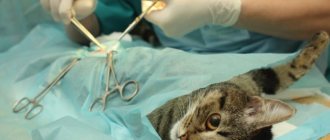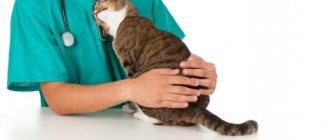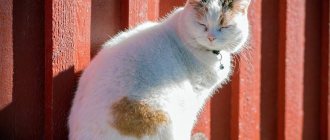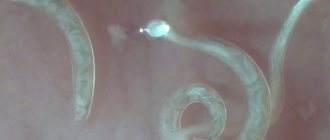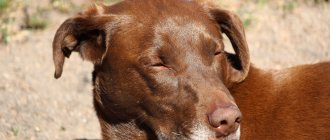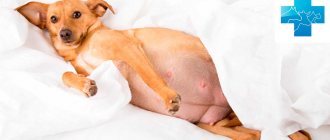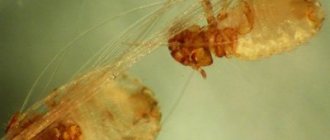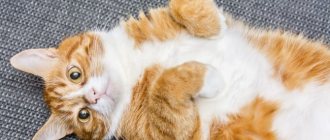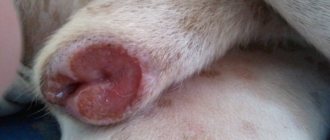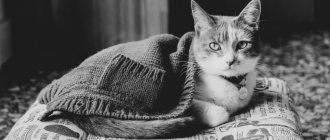Causes of pneumonia
Most often, pneumonia in cats is due to 3 reasons. These include:
- bruises or open wounds of the chest;
- infectious (fungal, bacterial, viral) diseases, helminthiases and protozoan infections;
- involuntary ingestion (aspiration) of liquids (medicines, vomit) and foreign objects (insects, small debris).
Separately, it is worth noting pneumonia in a kitten caused by doctor’s negligence. If the baby is prescribed artificial feeding, then incorrect insertion of the tube can injure his lung tissue.
In addition to the main cause, there are also predisposing factors that undermine the animal’s immunity. These include:
- lack of vitamins and minerals in the diet;
- lack of vaccinations and antiparasitic treatment;
- recent surgery, chemotherapy, or long-term use of immunosuppressive drugs;
- untreated diseases;
- neglect of hygiene;
- the presence of allergic reactions;
- hypothermia;
- frequent stress.
Regardless of the cause, the possible consequences are always equally dangerous. They can be avoided if warning signs are detected early.
Feeding a cat when sick
Considering how much a pet weakens during illness, feeding a cat during illness also becomes of great importance:
- If the cat does not eat at all, “feed” it by injecting a glucose solution intravenously.
- When the pet's condition begins to improve, it can be given veterinary holistic treatments. We recommend special lines from Purina and Hills.
- If it is not possible to purchase holistic supplements, a weakened cat is fed boiled chicken or rabbit. Beef liver is given three times a week, and low-fat cottage cheese three times a week.
- By the end of the second week of treatment, the animal can be transferred to its usual diet.
Symptoms of pathology
The severity of symptoms of pneumonia in cats depends on the form and severity of the disease. It is most difficult to notice changes in chronic pathology characterized by a sluggish course, or at the very early stage. In these cases, the symptoms are slightly different from the common cold. More precisely, the pathology is confirmed by specific signs:
- discharge of serous (serum-like), fibrinous (dense in consistency) or purulent exudate from the nose;
- frequent sneezing;
- breathing problems and wheezing;
- increased heart rate;
- blueness of mucous membranes;
- dry cough, gradually turning into wet;
- loss of consciousness.
A sick pet loses activity and often sleeps. His appetite decreases or completely disappears. The presence of fever is typical only in cases of infection; in other cases, the temperature does not rise above 0.5 °C.
List of drugs, antibiotics and vitamins
An approximate list of drugs, antibiotics and vitamins used in the treatment of pneumonia.
- Cats are usually prescribed cephalosporin antibiotics (eg, Ceftriaxone).
- As an expectorant, you can use the “classics” in the form of plantain or coltsfoot decoction. In addition, cats are allowed to be given Mucaltin, “Cough Tablets” and licorice extract. Drugs that block the cough reflex are prescribed only with the knowledge and approval of the veterinarian!
- Saline solution, glucose and Ringer's solution, and calcium borogluconate are administered intravenously. All these remedies help to quickly relieve intoxication.
- Among multivitamin preparations, we can recommend 8 in 1 Excel Brewer's Yeast, Beaphar Kitty's Mix, "FeliDerm" (AniVital), as well as regular Trivit or Tetravit.
- Dexamethasone is often prescribed to relieve inflammation.
Danger of pneumonia
Detection of the disease too late can result in damage to most of the lung tissue. This has a detrimental effect not only on the respiratory system, but also on other related organs that fight infectious intoxication.
At-risk groups
The risk group consists of animals deprived of a balanced diet and comfortable living conditions. These include:
- shelter residents living in small, cold spaces with poor ventilation;
- homeless cats forced to fight daily for food and find a roof over their heads;
- pets weakened by chronic diseases or frequent helminthiases.
The age factor should also be taken into account. The weakest immunity is typical for premature kittens and older pets.
Complications
If signs and symptoms of pneumonia appear in a cat, treatment should not be delayed. Diagnosis in late stages leads to an unfavorable prognosis. Prolonged development of the disease is fraught with chronicity of the process, pulmonary edema and blood poisoning.
The kidneys and liver suffer greatly from intoxication. All these changes are a huge burden on the body of a furry pet. With severe damage to the lung tissue, death is inevitable.
Predisposing factors
Veterinary specialists identify animals at risk, as well as factors that can provoke the disease.
- The first risk group includes kittens that are premature or born with developmental anomalies. Almost 100% mortality is recorded due to intrauterine infection of the fetus. Babies born with immunodeficiency syndrome, structural or functional pathologies of internal organs also die. The likelihood of recovery for a normally developed pet that falls ill in the first days of life is small, but it exists. In this case, the factors of pathogenicity of microorganisms, the severity of the disease, the timeliness of the start of treatment and the resistance of the animal’s body are of great importance.
- There is a high probability of infection in stray kittens or babies from a shelter during the cold season. Immediately after birth, they may become exposed to hypothermia, which can cause pneumonia. Aggravating factors are unsanitary living conditions, overcrowding of animals, and poor nutrition.
- Kittens that have had other microbial, parasitic or fungal diseases are highly susceptible to infection and have a hard time suffering from pneumonia.
Note! A provoking factor for domestic kittens can be severe stress caused by weaning from their mother, a sudden radical change in diet or living conditions.
Hypothermia can be caused by feeding frozen foods, bathing in a cold room, or setting up a pet bed in a drafty room.
Types of pneumonia
Based on the severity of symptoms and the speed of progression of pneumonia in cats, acute and chronic forms are distinguished. Secondary inflammations include those that arise due to other diseases. If the pathology developed independently, then it is called primary.
Depending on the degree of lung damage, there are 2 forms: lobar and catarrhal. In the first case, inflammation covers most of the lung tissue, and in the second, only a small area.
Due to the inflammatory process, pathology occurs:
- Aspiration
. Aspiration pneumonia in cats is not associated with infection. It is caused by chest trauma and inhalation of foreign objects or liquids.
- Infectious
. Infectious pneumonia in cats is caused by pathogenic microorganisms: viruses, helminths, bacteria, fungi or protozoan parasites.
The most dangerous forms include bacterial and lobar. If they are detected, artificial ventilation is used to save the animal.
Classification
This disease has been known for a very long time, and therefore scientists managed to create a truly comprehensive classification.
Let's take a look at it:
- The most common is the bacterial variety . Most often, infections of this type are secondary, that is, they develop against the background of an existing infectious disease of an animal whose body has been severely weakened by the disease and cannot contain opportunistic microflora.
- Viral. An analogue of the previous type is also most often a secondary disease that develops against the background of severe viral infections.
- Parasitic. Do you think this phenomenon falls into the category of exotic? Nothing happened! The fact is that parasitic pneumonia very often occurs when an animal is infected with roundworms. The intermediate stage of their development takes place in the lungs, which causes the inflammatory process.
- Fungal is the nastiest variety. It is caused by pathogenic fungi and is very, very difficult to treat.
The course of the disease can be acute, subacute and chronic. In addition, it can be primary (occurs from hypothermia, a specific pathogen) and secondary (against the background of other infectious and viral diseases). Of course, there is also lobar, serous, purulent pneumonia... But ordinary cat breeders, of course, do not need to know all the types. You better be able to determine when to take your cat to the vet.
Accurate diagnosis
Before deciding how to treat pneumonia in a cat, the veterinarian must rule out the presence of pathologies with similar symptoms. A similar clinical picture is typical for pets suffering from calcivirosis, rhinitis, bronchitis, tracheobronchitis and acute tonsillitis. Despite the similarities, the treatment for these diseases is different. Choosing medications on your own can worsen the animal’s condition.
Pathological noises and changes in the boundaries of the affected organ are detected by listening (auscultation) and tapping (percussion) of the chest. This type of examination assesses the physical condition of the lungs.
An x-ray shows a more accurate picture. The veterinarian takes a picture in frontal and lateral projections, which allows one to assess the existing lesions of the lung tissue. The diagnosis is confirmed by identifying a dark spot with blurry boundaries.
The list of mandatory studies also includes blood biochemistry, sputum analysis and bronchial swabs. Based on the results of these tests, the veterinarian confirms the presence of a specific infection. This helps to select drugs aimed at destroying a specific pathogen.
Diagnostics: tests, x-rays and bronchoscopy
Diagnosis of pneumonia begins with a visual examination of the cat, measuring body temperature, and listening to the sternum area with a phonendoscope for the presence of wheezing. The veterinarian will definitely take a general blood test to determine the level of leukocytes (during inflammatory processes in the body, their level is usually higher than normal).
One of the effective methods for diagnosing pneumonia in a cat is radiographic examination, which is a method of dynamic examination using x-rays. In real time, using this device, the veterinarian is able to monitor the condition of the animal’s internal organs and select the most suitable projection for the image in order to determine the presence or absence of inflamed elements in the lungs.
In cases where the results of radiographic examination are in doubt, veterinary medicine resorts to bronchoscopy. This is the introduction of a thin bronchoscope into the trachea and bronchi for direct examination and a more detailed examination of their condition. This type of diagnosis can also be used to perform a biopsy for further histological examination and removal of foreign bodies (if necessary).
How is pneumonia treated in cats?
Features of treatment and the duration of the recovery period depend on the cause of the disease and the degree of tissue damage. At the initial stage, the animal is treated at home.
If there is extensive damage to the lung tissue, trauma or a foreign body is detected, surgery and artificial ventilation may be necessary. In this case, the pet remains in the hospital until the condition stabilizes.
Veterinarian appointments
In addition to oxygen deprivation, dangerous symptoms include severe exhaustion, fever and complete refusal to eat. In all these cases, the mustachioed patient is provided with first aid in a hospital setting.
If the animal’s condition is unstable or critical, it is important to stabilize it and eliminate the cause of the problems that have arisen. Only after this do doctors begin to restore the lungs, relieve symptoms and stimulate the immune system. Dehydrated and malnourished patients are given intravenous drips. Infusion therapy helps restore strength by bypassing regular feeding.
If a bacterial infection is detected, the patient is prescribed antibiotics (Moxifloxacin, Azithromycin, Levofloxacin, Amoxicillin). To achieve quick results, injection solutions are used. Once in the blood, the active substance immediately reaches the desired organ. The duration of antibiotic therapy ranges from 2 weeks to 1 month. Animals infected with legionella or chlamydia take the longest to treat.
In case of fungal or viral infection, antimycotics or antiviral drugs are prescribed. Helminth infections are treated by taking anthelmintics. If complications occur in other organs, cardiac medications and hepatoprotectors may be required, and in case of edema, diuretics (Furosemide).
During treatment, it is prohibited to use antitussives. They prevent the discharge of sputum, worsening the animal's condition. Mucolytics (Mukaltin, Lazolvan) are used to liquefy it, and expectorants and physiotherapy are used to remove it. Recommended procedures include UHF heating, chest massage and electrophoresis. They are carried out until the cough is eliminated, but are prescribed only after the acute form has been eliminated.
Due to prolonged use of antibiotics, which have a detrimental effect on the immune system, all patients are prescribed immunomodulators (Fosprenil, Gamavit). Particular attention is paid to vitamins B and C. They are administered intramuscularly.
Do not use traditional medicines that are not approved by your doctor. They are effective only in complex therapy and do not eliminate the root cause. Herbal treatment to increase immunity is permissible only in the absence of allergies.
Nutrition and care
A pet with a stable condition and an awakened appetite can be treated at home. He will need a quiet and warm place to recover comfortably. Remember that both drafts and heating devices located too close are equally dangerous for the patient. If the animal is cold, cover it with a blanket or blanket.
Also remember to make sure there is no noise. Place the sick cat in a quiet room and temporarily limit his contact with children.
If you have your own home, then do not let your pet outside during the entire recovery period. Low temperature, which is a provoking factor, can negate treatment. Provide fresh air with regular ventilation and purchase a humidifier.
If there is an increased accumulation of secretions in the bronchi, massage or heating with an infrared lamp is allowed. The veterinarian will clarify the specifics of these procedures.
To restore strength, your mustachioed pet will need a balanced, low-fat diet. Food should be satisfying, but easily digestible. When feeding naturally, focus on foods rich in potassium and vitamins A, B and C.
To reduce the load on the stomach, reduce the usual portions and increase the number of feedings to 6 times a day. Do not forget to monitor the sufficient amount of water, its freshness and temperature - too cold dishes and liquids can aggravate the patient’s condition.
Recovery period
On average, recovery takes from 3 to 6 weeks, but in particularly severe cases it can take up to 2 months. The duration of the rehabilitation period depends on:
- compliance with care and feeding recommendations;
- degree of damage to lung tissue;
- general condition of the patient;
- severity of existing symptoms.
Adjustment or discontinuation of drug therapy is determined using x-rays. The frequency of examinations is individual and agreed with the attending physician.
Symptoms and first signs of the disease
Pneumonia is characterized by the following symptoms and first signs of the disease:
- Cough. In many cases it is initially hard and barky, but subsequently softens to become moist. At the same time, wheezing and gurgling appear in the chest.
- Spontaneous and sharp increase in general body temperature. A fever of a constant or intermittent type is considered typical; temperature “swings” are often observed when the animal alternately becomes hot and then noticeably “cold.” This has an extremely bad effect on the state of the vascular system and old/very young animals can die already at this stage.
- Shortness of breath, hoarse and difficult breathing. Sometimes the cat begins to whistle and snore, reminiscent of a boiling kettle. In severe cases, breathing becomes so difficult that all visible mucous membranes turn blue. In such situations, by the way, it is necessary to urgently call the veterinarian: such severe hypoxia is extremely dangerous and rarely goes away without serious consequences (including for the brain).
- There may be visible enlargement of the subcutaneous lymph nodes.
- The animal refuses food. Thirst, as a rule, either remains at the same level or intensifies.

